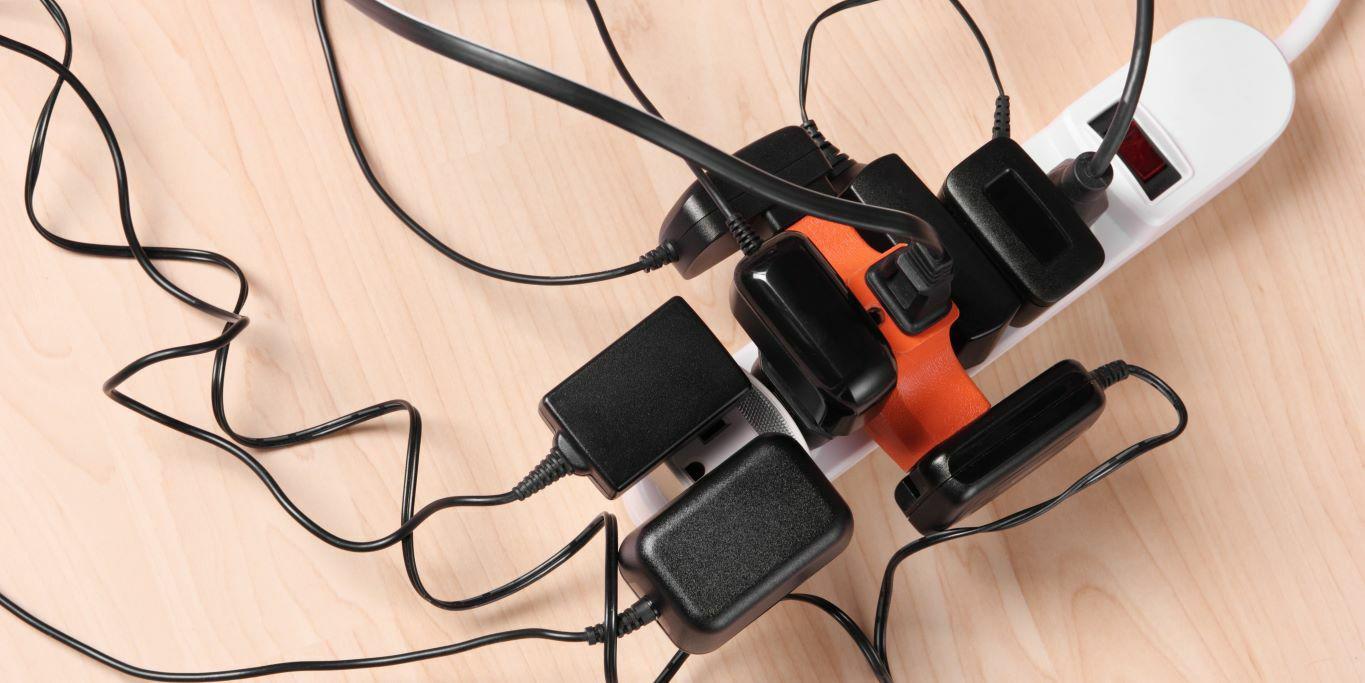Overloaded Circuits: Everything You Need to Know

Modern life runs on electricity, and all our electrical devices put a serious squeeze on your home’s circuits and outlets.
The problem is that overloaded circuits cause more than just annoying tripped breakers: They can also damage our devices and substantially increase the risk of fire and electric shock.
Read on to find out what it takes to prevent circuit overload and keep your home powered safely …
First, What Is an Overloaded Circuit?
Circuit overload occurs when the demand on one circuit exceeds its capacity, measured in amps. If your home’s electrical system is a series of roadways; each road is a circuit. Each road can only handle so much traffic at a time. When the amount of traffic (electric current) flowing through it grows too large, the breaker should trip, stopping the flow of electric current.
But if the breaker doesn’t trip (or doesn’t trip fast enough), it poses a fire risk.
Importantly, overloaded electrical circuits pose three main problems:
- Overloaded wiring can overheat, creating a fire risk.
- Household appliances and any other devices plugged into the affected circuit can receive electrical damage.
- Your circuit breaker will trip, A) severing the electrical connection to your devices and B) requiring you to reset the breaker at the electric panel.
Overloaded Electrical Outlet vs. Overloaded Circuit Breaker: What’s the Difference?
- An overloaded outlet is a single outlet that’s asked to draw more power than it can safely deliver, often from using power strips to plug in too many devices.
- An overloaded circuit means the entire circuit is overdrawn, which includes the collective demand from multiple outlets assigned to the same circuit (on your electric panel).
To pick up the roadway analogy, an overloaded outlet means too much traffic on a single offramp. An overloaded circuit means there’s too much traffic on that stretch of road!
How to Tell If a Circuit Is Overloaded
Four tell-tale signs indicate a circuit is being used over its intended capacity:
- A tripped circuit breaker.
- Dimming or flickering lights (especially when large appliances turn on).
- Warm outlets or switches.
- Appliance issues, including malfunction, buzzing, or shutting off unexpectedly.
It’s especially important to watch for these signs if you’ve recently installed a new appliance or added a device to an already busy circuit.
How to Prevent Circuit Overload
It takes just a few minutes to get a good idea of your circuit’s capacity and how much power it delivers. Stay ahead of electrical problems by taking a circuit-by-circuit approach to overload prevention.
1. Check circuit capacity
Head to your electric box and look at the breaker switch corresponding to the troublesome circuit. The breaker switch will be rated for 15 or 20 amps. This is the maximum current the circuit can safely deliver. Tally up the aggregate amps of all devices on the circuit and keep the total under the circuit’s capacity.
2. Keep large appliances on a dedicated circuit
Some appliances use a lot of energy, which means even a single machine will consume most of the circuits’ amps. Give washers, dryers, refrigerators, dishwashers, ovens, Level 2 EV chargers, and other energy-intensive appliances each their own circuit.
3. Don’t DIY electrical repairs
Electrical repairs are challenging in the best of scenarios. Leave the electrical fixes to the professionals at Mister Sparky. We have the expertise to make thorough and lasting repairs you can rely on for years to come.
For Circuit Breaker Troubleshooting and Fixes, Count on Mister Sparky
When it comes to preventing circuit overload, best guesses just don’t cut it. Keep your home and family safe with licensed and insured electrical repairs from your local Mister Sparky Electric.
Our friendly electricians can identify circuit issues, make cost-effective repair recommendations, and provide you with upfront StraightForward Pricing®. Find the location near you, or call (800) 906-4577 today to book your appointment!
